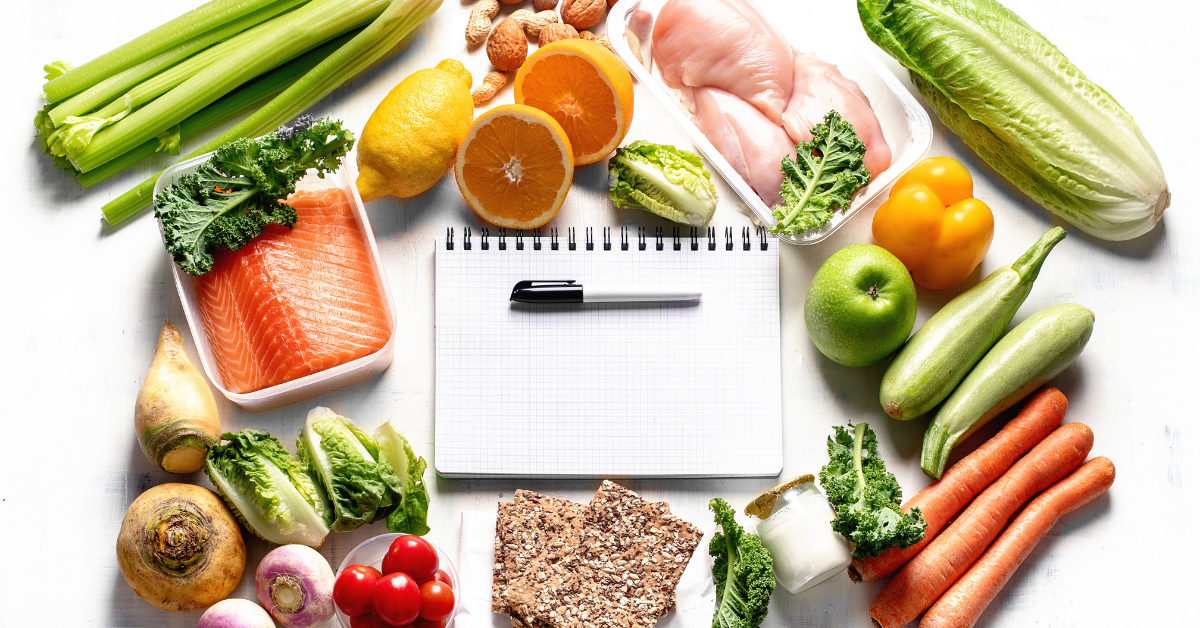Master meal and menu planning effortlessly. Learn how to streamline your weekly meal prep, save time, and ensure nutritious and delicious meals for you and your family.
One of the keys to healthful eating and the best way to stave off boredom and hunger pangs is to be prepared. Spending a few hours at the beginning of your week doing the following things will save you tons of time and frustration later on:
- Get busy! A couple of days before—or the morning of—your food shopping day(s), inventory your kitchen to avoid duplicate or impulse buys when you’re in the store or at the market. Write down everything in your fridge, cabinets, and pantry, including oils and spices, and keep like things grouped together on your list (meats, veggies, nuts, etc.). Toss any item that’s expired or compost rotting foods.
- Get creative! Based on your inventory list, start thinking of meals you can make to get you through the week. Mix and match what you have on hand to be most efficient. There are plenty of websites like RealFood.com and smartphone apps like Whole Foods Market Recipes that can help you generate recipes based on what’s already in your kitchen…or be inspired by other people’s recipes…or try a simple Leftovers Salad.
- Get crackin’! Write down your weekly meal plan. Now that you have an idea of what to make, start plugging in your meals. Be creative, but don’t overburden yourself with anything that’s going to require too much prep or cooking time or will force you to track down ingredients from more than one or two stores. Save that for special occasions. Instead, spotlight one ingredient in multiple ways throughout the week. For example, can that chicken in the freezer be used in one night’s dinner and another day’s lunch? Will the eggs in your fridge be just as good for breakfast one day and in a lunch sandwich wrap the next?
- Get ready! Highlight ingredients/supplies you are missing from your inventory—or running low on—and create a shopping list.
- Get moving! Go shopping or place a delivery order from your local online grocer, like Instacart and (in NYC) FreshDirect. Do not overbuy if you don’t have a plan on how to use the extra goods. Stuff is on sale all the time, so be a savvy shopper and use your coupons if you got ’em, but forego any in-store specials if it means you’ll be taking home things you don’t need.
- Get cooking! Once you’re home, or your grocery delivery has arrived, immediately unpack everything and refer to your meal plan to start prepping what you can. Now is the time to start divvying things up into smaller packages or snack bags and freezing/refrigerating them. Start that pot of chili, begin steaming the string beans, mash up those sweet potatoes. And if there are folks in your house you can recruit to help you out, DO IT. It’ll make things go quicker and everyone will appreciate the time and effort that went into feeding them such healthful and yummy food.
- Get some rest! Now that you’re done and everything is cooked, labeled, packed up, and put away, take some time for yourself or with your family and congratulate yourself on a job well done. All you have to do from this point forward is refer to your weekly meal plan every day or the night before, then defrost, reheat, or assemble your meals accordingly.
Keep motivated by what you’ve just read and download one of our *FREE* templates to use during your weekly meal planning and shopping days:
Drop a comment below with your successes, challenges, or other helpful strategies.



Great post, Dina!
Thank you, my dear!